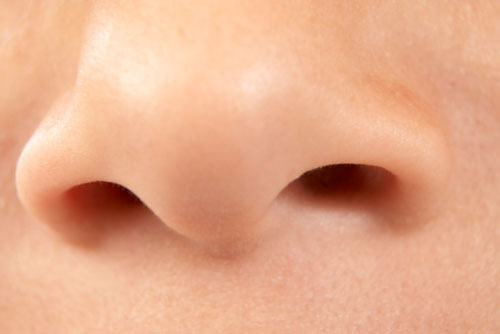 A Scottish woman’s unusual ability has opened the door for research into whether Parkinson’s can make people smell. If fruitful, these findings could mean that early diagnoses of the degenerative disease could be as simple as taking a swab of someone’s armpit or forehead, according to a team from the University of Manchester.
A Scottish woman’s unusual ability has opened the door for research into whether Parkinson’s can make people smell. If fruitful, these findings could mean that early diagnoses of the degenerative disease could be as simple as taking a swab of someone’s armpit or forehead, according to a team from the University of Manchester.
The research was inspired by 65-year-old Joy Milne, who noticed that her husband began emitting a “subtle musky odor” six years before he was diagnosed with Parkinson’s. Milne mentioned the smell in passing to a few scientists and piqued their curiosity. In a cursory trial at the University of Edinburgh, Milne was asked to smell 12 T-shirts that had been worn by those with and without Parkinson’s. Milne correctly identified the six who had Parkinson’s and five who did not but insisted that the 12th—who was part of the control group—also had the disease. Eight months later, the 12th received a Parkinson’s diagnoses, confirming Milne’s assertions. Although it was a small sample size, the results were enough to get researchers fully engaged.
Parkinson’s disease is a devastating degenerative disorder that affects the central nervous system. As the disease progresses, it can cause shaking, difficulty walking, and dementia. Although the disease was first found and named by Dr. James Parkinson in 1817, there has not been much advancement in how it is diagnosed. Doctors have to largely rely on the same observational criterion that was established a little over two centuries ago.
The current hypothesis is that Parkinson’s causes changes in a person’s sebum, an oily substance produced in the skin, which is where the odor comes from. The Manchester team is currently recruiting participants in the study and aims to have a sample size of around 200 people. Participants will be asked to allow a skin swab to be taken and to fill out a short questionnaire. Milne, along with scent experts from the food and drink industry, will be helping assess the samples as the scientists attempt to determine what chemical differences, if any, exist in the skin of Parkinson’s patients.
Sources for Today’s Article:
Wang, Y., “The amazing woman who can smell Parkinson’s disease — before symptoms appear,” The Washington Post web site, October 23, 2015; http://www.washingtonpost.com/news/morning-mix/wp/2015/10/23/scottish-woman-detects-a-musky-smell-that-could-radically-improve-how-parkinsons-disease-is-diagnosed/.
Quigley, E., “The Woman Who Can Smell Parkinson’s Disease,” BBC News web site, October 22, 2015; http://www.bbc.com/news/uk-scotland-34583642?SThisFB.
